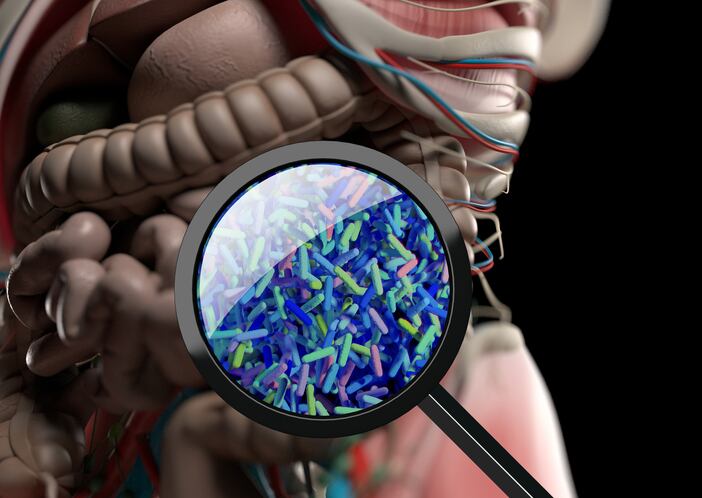Extensive clinical, demographic, lifestyle, and nutritional data collected from 304 subjects aged 65 to 98 years shows that past variables demonstrate “good levels of predictability” for current bacterial communities.
This suggests long-term history “exerts significant impacts” on the current microbiome and highlights “the key variables that are important for maintaining a healthy gut at a later life stage”, say the authors of a new study.
Writing in 'Nature Aging', they assert that observed historical variables explained “a significant fraction of current quantitative microbiome variation in older adults” and expand “the explanatory power of contemporary covariates by 33.4%”.
“We provide evidence that the current gut microbiome is predictable by past variables and that inclusion of such variables can increase the variation explained by the current host lifestyle and physiology,” they say.
Temporal effects
Contemporary variables used to explain host microbiome include age, sex, stool consistency, health status, diet, and medication, however the gut is sensitive to continuous or occasional lifestyle changes that often have long-term implications, the authors explain.
Strong antibiotics, for example, can impede microbiota recovery even after six months and provide a solid argument for prospective collection of host data to study cumulative effects, they say.
“Isolated events and long-term lifestyle choices can permanently alter the microbiome, yet long-term temporal effects have been understudied.”
Study protocol
Researchers analysed the current, quantitative microbiome composition in older adults as well as long-term host metadata (such as food intake, lifestyle, medication, blood chemistry and clinical assessments), collected in five-year intervals over 26 years.
Male (154) and female (150) subjects were recruited from the cohort in the Italian Bruneck prospective population study on the epidemiology and pathogenesis of atherosclerosis. Population mobility is low in the area, at 0.2% per year at the time of the study, the authors note.
Faecal samples obtained in 2016 were exposed to quantitative microbiota profiling (QMP) to establish associations between current absolute microbiome abundances and historical metadata, as well as to determine the predictive capacity of lifestyle history on the current microbiome.
Contemporary microbial covariates were investigated using distance-based redundancy analysis (db-RDA) to establish current and past variables. A random forest classifier was used to predict microbiome behaviour.
Cumulative nonredundancy
Data confirmed that both covariates for transit time and historical parameters contributed significantly to overall microbiome variations.
Non-sport physical activity and alanine transaminase changes from 2005 to 2016, and haemoglobin and beta-blocker changes from 1990 to 2016 were identified as significant covariates in addition to contemporary variables.
The authors speculate that historical variables were mostly linked to beta-blocker use (linked to a compositional shift of beta-diversity), blood parameters, and diet.
“Interestingly, inclusion of these significant historical parameters significantly increased the cumulative nonredundant effect size to 8.5%, indicating the potential explanatory power of long-term historical covariates on the current microbiome.”
Additional activity
Following db-RDA analysis, researchers noted 15 variables that affected current microbiome variation and increased the final cumulative non redundant effect size to 10.4%.
Consumption of the local staple (dumplings) was considered the second-largest effect size in relation to historical covariates and was associated with Dialister abundance. Furthermore, vegetables, ‘liquor’, and seed intake shared strong predictive qualities for gut health.
Physical activity was highlighted as another key covariate for gut health, with both historical and recent activity reducing the ratio of dysbiotic B2 to non-B2 enterotypes in subjects, according to results.
“Overall, this shows that the inclusion of historical data resulted in a 33.4% increase in nonredundant explanatory power for global microbiota variation,” the authors’ write.
Further investigation
Although results indicate that microbial variation can be explained by historical factors, further research is required.
The study lacked replications in similar large-scale follow-up cohorts in heterogenous populations. Similarly, the use of shotgun metagenomics and meta-metabolomics could enhance function insights, the authors say.
Source: Nature Aging
Published online, October 14, 2022: https://doi.org/10.1038/s43587-022-00286-w
‘Long-term life history predicts current gut microbiome in a population-based cohort study’
Authors: Jiyeon Si, Jorge F. Vázquez-Castellanos, Ann C. Gregory, Lindsey Decommer, Leen Rymenans, Sebastian Proost, Javier Centelles Lodeiro, Martin Weger, Marlene Notdurfter, Christoph Leitner, Peter Santer, Gregorio Rungger, Johann Willeit, Peter Willeit, Raimund Pechlaner, Felix Grabherr, Stefan Kiechl, Herbert Tilg and Jeroen Raes

